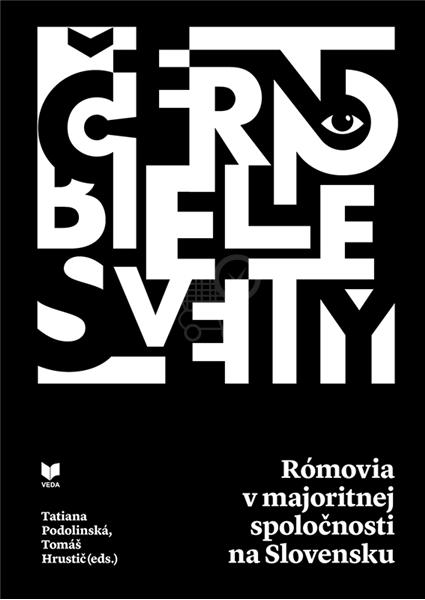The Black and White Worlds

- PODOLINSKÁ, Tatiana - HRUSTIČ, Tomáš (Eds.): Čierno-biele svety. Rómovia v majoritnej spoločnosti na Slovensku [The Black and White Worlds. Roma people in the Majority Society in Slovakia]. Bratislava: Veda, 2015. 595 pp. ISBN 978-80-224-1413-5.
The publication of over 600 pages is the result of many years of work under the VEGA project carried out by the Institute of Ethnology SAS. The book editors based its compilation on the assumption of non-existence of a publication in Central Europe covering the different aspects of life in Roma communities and the relationships between the Roma and the majority. The preparation of the book involved 22 authors specialised in various disciplines from Slovakia, the Czech Republic, Bulgaria, England, and Brazil, who built on long-term ethnographic, research, as well as qualitative and quantitative research across disciplines. Through multiple examples, the authors illustrate how the construction of the image of the Roma is associated with the collective attribution of certain ethnic and cultural stereotypes. In addition, what is common to the studies in this book is the description of the perspective from within the Roma community. These insights are useful when it comes to reflecting on why some balancing policies or government measures fail in practice. The publication thus seeks to convey a better understanding of the mutual interactions between the Roma and the majority.
Thematically, the book is divided into three basic areas. The first area (I) ‘Black and white policies’. Discourses, attitudes, and participation opportunities deals with the attitudes of the mainstream population (of both the lay and expert public) towards Roma and with the opportunities for the Roma population to participate in the creation of regional and national policies. The second thematic area (II) Where and how do we live? Socio-economic images of two different worlds offers six studies by eight authors, who describe the social and economic position of Roma communities in Slovakia from the perspective of several disciplines. The third thematic area entitled (III) How do we speak of ourselves? The linguistic and social images of a Rom as tools to maintain the world of the ‘black’ and the world of the ‘white’ consists of seven studies that offer primarily a socio-linguistic and genre-discursive perspective in Romani studies. The publication is unique not only for presenting inter-disciplinary research on the forms of social representations and ways of construction of the hetero-images of the Roma, as created by the non-Roma, but it equally observes the ways of construction of self-images and hetero-images within Roma groups.